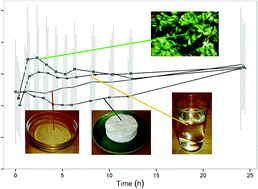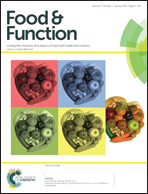Folate bioavailability from foods rich in folates assessed in a short term human study using stable isotope dilution assays
Abstract
Different sources of folate may have different bioavailability and hence may impact the standard definition of folate equivalents. In order to examine this, a short term human study was undertaken to evaluate the relative native folate bioavailabilities from spinach, Camembert cheese and wheat germs compared to pteroylmonoglutamic acid as the reference dose. The study had a single-centre, randomised, four-treatment, four-period, four-sequence, cross-over design, i.e. the four (food) items to be tested (referred to as treatments) were administered in sequences according to the Latin square, so that each experimental treatment occurred only once within each sequence and once within each study period. Each of the 24 subjects received the four experimental items separated by a 14-day equilibrium phase and received a pteroylmonoglutamic acid supplement for 14 days before the first testing and between the testings for saturation of body pools. Folates in test foods, plasma and urine samples were determined by stable isotope dilution assays, and in urine and plasma, the concentrations of 5-methyltetrahydrofolate were evaluated. Standard non-compartmental methods were applied to determine the biokinetic parameters Cmax, tmax and AUC from baseline corrected 5-methyltetrahydrofolate concentrations within the interval from 0 to 12 hours. The variability of AUC and Cmax was moderate for spinach and oral solution of pteroylmonoglutamic acid but high for Camembert cheese and very high for wheat germs. The median tmax was lowest for spinach, though tmax showed a high variability among all treatments. When comparing the ratio estimates of AUC and Cmax for the different test foods, highest bioavailability was found for spinach followed by that for wheat germs and Camembert cheese. The results underline the dependence of folate bioavailability on the type of food ingested. Therefore, the general assumption of 50% bioavailability as the rationale behind the definition of folate equivalents has to be questioned and requires further investigation.


 Please wait while we load your content...
Please wait while we load your content...